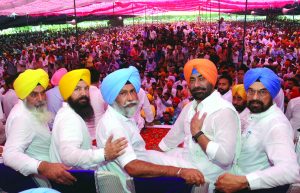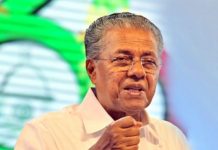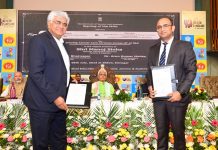
Since July 26, the turmoil in Punjab AAP is showing no sign of abating. The no-holds-barred offensive launched by eight-out of the total 20 MLAs in Vidhan Sabha over removal of Sukhpal Singh Khaira as the Leader of Opposition (LoP) was not expected in the least by the party’s leadership.
There is an open revolt against the manner in which the affairs of the state unit of the party were being handled. The daily war of words since then between the rebel group of MLAs and those against them including a majority of the state unit office bearers has precipitated the crisis to a level that warned a split may be on the cards.
Even as the rebel group led by Sukhpal Khaira and Kanwar Sandhu have been queering pitch for the party’s central leadership since Bathinda Convention on August 2 which saw a big turnout in their favour, there has been no thaw in the situation.
Though this is not the first time that AAP, which has next significant presence in Punjab after Delhi, is embroiled in the crisis like this, yet in terms of scale and positions taken by warring inner party groups, it is unprecedented.
“We are not even thinking of parting ways with our central leadership. Kejriwal is our leader. But there will be no compromise on the resolutions passed at our Bathinda Convention,” said Kanwar Sandhu, a journalist-turned politician who represents Kharar constituency in the Vidhan Sabha. Seeking autonomy in running the Punjab unit of the party is one of the major resolutions. And this is what has been taken most unkindly by the central leadership as it considers it as a step towards literal revolt. If that happens, the party is sure to lose the status of the main Opposition party in the Vidhan Sabha.
The rift among the party seniors at the state level has expected demoralising impact on the party’s volunteers. They too are vertically split. And they give vent to their ire on social media allegedly at the behest of rival group leaders. The situation degenerated to the level that even the women MLAs opposed to Khaira-Sandhu duo were targeted on social media. Sandhu, however, apologized for that.
Nobody in Punjab AAP and even in the rebel group knows where the ongoing turmoil will it lead them to. “What next? It’s a million dollar question,” said Dr Balbir Singh, co-president of the state unit and the main person who Khaira accused of conspiring against him and leading to his removal as the LoP. This suave Patiala-based eye surgeon, who enjoys trust of the central leadership, attributes Khaira’s removal mainly to his failure to highlight the party and its government’s achievements in Delhi to bolster party’s image in Punjab. Even as both warring groups stick to their stated positions, the crisis seems unending. Though Dr Balbir Singh discloses efforts are on to woo back the rebels, the onus is on the both sides to broker peace. Undoubtedly, the central leadership has to play the bigger role and make effective intervention. But sources say there is no sign of this happening at the moment. The party’s Punjab Affairs Incharge and Delhi Deputy Chief Minister Manish Sisodia has hardly any time out of his busy official duties in Delhi.
For the close observers of AAP’s journey in Punjab, the current crisis is inevitable outcome of the its brand of politics. “Such a situation arises when a party deals in politics bereft of any ideological substance. The AAP was guided more by power logic and failed to deliver on people-centric issues. This brand of politics cannot sustain for long,” observes Chandigarh-based political analyst Dr Parmod Kumar who is Director, Institute for Development and Communication.
Apparently stung by the adverse public reaction fearing political alienation due to constant inner party bickering, both factions have now realized that they should connect with people and the party volunteers at the grassroots level. “We have started series of meetings to revive and strengthen the party at the grassroots on line with our resolution at Bathinda Convention,” says Sandhu. Similarly, Dr Balbir Singh says they too have started district level meetings. Such series of meetings seem to have been planned more to serve the purpose of establishing their respective credentials. The internal rift still remains.
Observers attribute the crisis to lack of party loyalty and resultant inner party discipline which in many ways could not mature as self-seekers thronged the party sensing it could form the government in the state. This process started after unprecedented four-seat victory in 2014 Lok Sabha elections. Several disgruntled middle and lower rung leaders from other parties including Akalis, Congress and BJP jumped on to AAP bandwagon.
It continued like this till Vidhan Sabha elections in 2017. The flashpoint came at the time of tickets distributions. The desertions followed. The allegations of ignoring genuine candidates and selling tickets flew thick and thin. The central leadership was accused of arrogance and Punjab versus Delhi narrative gained currency. Most of the present senior leaders including MLAs, particularly those in the rebel group, endorsed this narrative. Interestingly, this narrative has revived in an equally scathing manner after removal of Khaira as the LoP.
In a way, the ongoing crisis is being seen as another round of filtering process. Khaira and Sandhu were among many who had joined AAP not long before the Vidhan Sabha elections. Those who had been finding it increasingly tough to adhere to the party discipline, even when apparently wrong decisions are taken, have for the first time been clearly marked. “It’s a welcome churning. After all, if something negative is happening, positive too is there at the same time,” philosophises an MLA without wishing to be named. As a fallout of the Khaira episode, the three leaders back at the helm of the party affairs- Sangrur MP Bhagwant Maan, State co-president Dr Balbir Singh, newly appointed LoP Harpal Cheema- are the old timers.It is not that the rebels are rootless. A fairly impressive turnout at their Bathinda Convention, irrespective of the rivals allegation of it being helped by supporters of the AAP’s estranged alliance partner, Ludhiana’s MLAs duo Bains brothers, provided them enough boost to remain unrelenting in their demand of having the right to run the party in the state on their own. They claim to have majority of volunteers and the district level leaders on their side. Social media is also abuzz with a section of NRI Punjabis siding with them. But will all this be enough to establish them as the real face of AAP capable of taking decisions in line with the original AAP plank that once earned the party mass support in Punjab? Sandhu has more than once talked about reinventing Kejriwal’s concept of Swaraj.
Kumar thinks the rebels have the potential of becoming mega spoiler like Bahujan Samaj Party (BSP). They did not offer any Punjab-centric concrete agenda at Bathinda Convention. Their main focus was on presenting themselves as the real AAP. “No doubt, there will always be scope of a third alternative in Punjab. They can be formidable and give sleepless nights political rivals if they resign as MLAs. It must be remembered that people tend to sympathise in such cases,” he added.
But the question is, do the rebels have the courage to take such a step in the interest of Punjab? “What next?” is indeed a million dollar question for AAP as a whole in Punjab.
letters@tehelka.com












